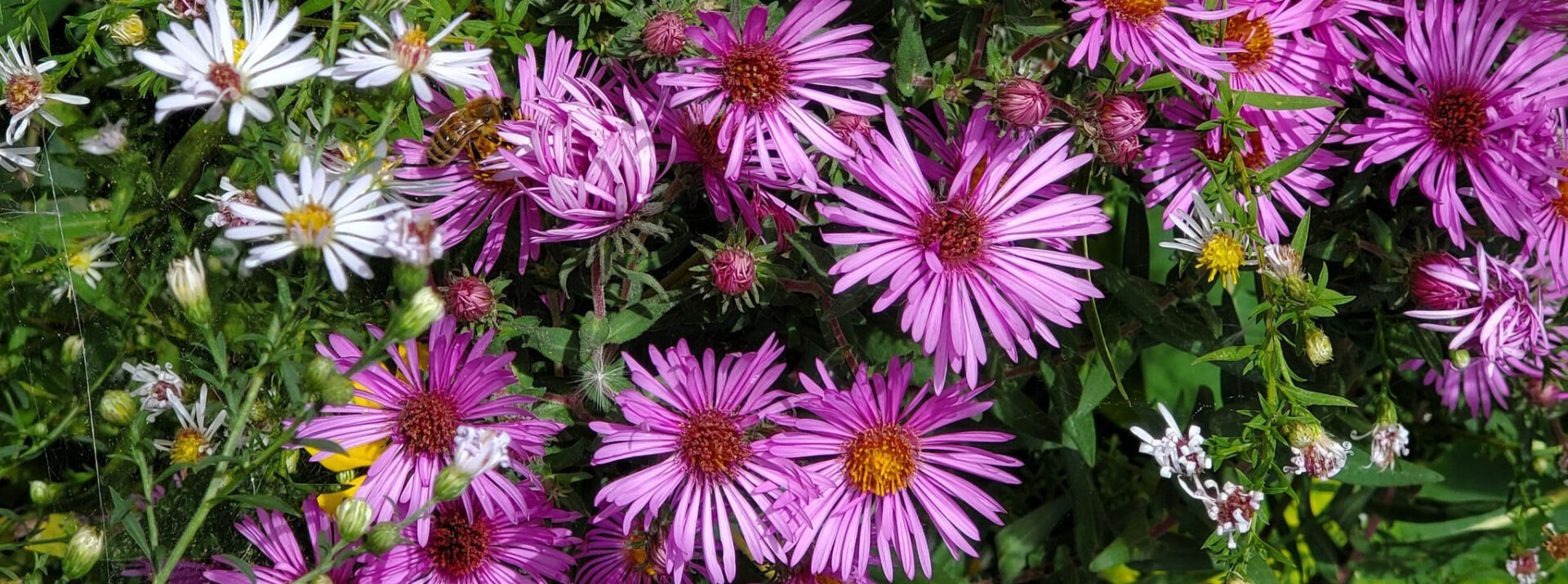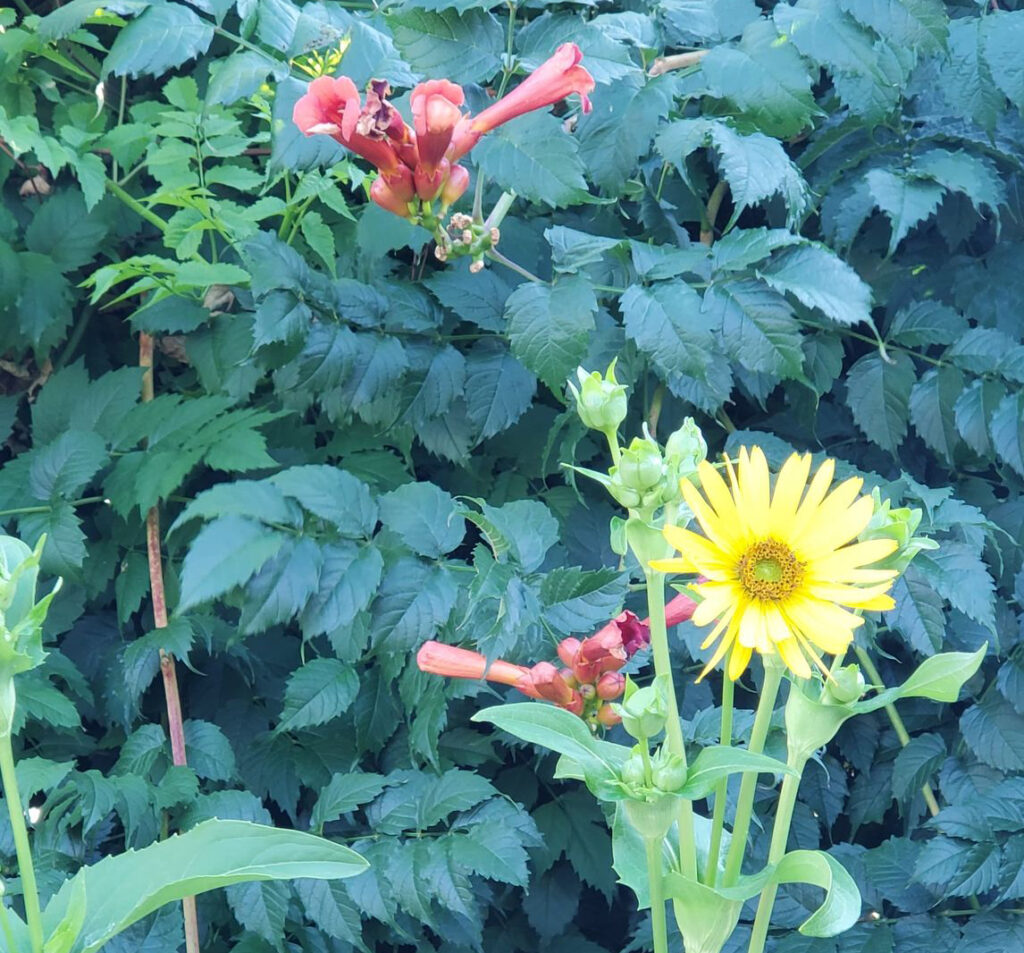Fall gardening is about beginnings, too


If you'd like native plants to flourish in your yard next spring, many of them need to be sown right now, says urban environmentalist Jason Allen.
It’s autumn, and it’s time to clean up the garden, put the toys and tools away and get ready for a winter of staring longingly at seed catalogs while waiting for the first hint of green.
Fall is about endings when it comes to gardens, not beginnings, right?
Not so fast.
If you have heard about the wave of popularity of native plants sweeping the gardening world, you may be thinking of adding some flowers such as Joe Pye weed, native asters or phlox to your garden next spring.

Unfortunately, if you sow them next spring, you’ll have to wait a full year before they germinate, unless birds and ants get them first.
The flowers, grasses, trees and shrubs that have evolved over millennia to make their home right here in one the most biologically diverse regions of Canada, the Carolinian Forest Zone, need to be treated differently than common garden plants.
Centuries of evolving to fit our climate mean that the plants that make their home here have adapted not only to hot sticky summers and relatively short growing seasons, but also to cold winters.
Because of that, many native plant seeds require what is called “cold stratification” to germinate. Simply put, they need to freeze once, for a certain length of time, before they warm up and can sprout. It’s an evolutionary defense against the cold for these plants. But for gardeners, it means the best time to sow native plant seeds is right now.
A quick Google search will show you many different methods of sowing native seeds in the fall to ensure germination and a good supply of plants for the spring.
A popular version is to cut a two-litre clear plastic bottle in half, fill the bottom with soil, sow your seeds and water them well. Then you tape the bottle back up, leave the lid off so it gets some moisture, and leave it outside all winter.
This not only ensures that seeds will cold stratify, but that in the spring when they germinate, they will avoid getting munched by pests and rabbits early on. Once the seedlings are more established you can transplant them wherever you want in your garden.

In our yard, in the appropriately named "wild corner" we have a much more casual and direct approach. A handful of seedheads gathered on a country walk will get crushed between the fingers and scattered in the flower bed in the next few weeks, and whatever comes up is just that much more of a delight. For those who like their planting to be more structured, you can also buy native seeds from reputable growers across Ontario, such as northernwildflowers.ca or wildflowerfarm.com.
Always remember Beth Chatto’s concept of “right plant, right place.” If you haven’t just moved in over the summer, you know your yard and the soil and light conditions. A good guidebook like Lorraine Johnson and Sheila Colla’s A Garden for the Rusty Patched Bumblebee, Ontario Edition can be invaluable in choosing native flowers and shrubs that will thrive in your yard.
You can also use such a guide if you’re planting native plants on a balcony or fire escape. Put your pots with seeds in them out now to stratify, and in the spring nurture and water them into a mini ecosystem for nearby native insects.
Whichever way that suits you is fine, but it’s good to remember some native flowers don’t germinate easily and can require just the right conditions to do so. Don’t get disappointed. Part of the fun of gardening, after all, is kind of like the fun of buying a lottery ticket. It’s all about the anticipation. Keep trying until you find seeds that germinate well in your garden, with your soil and light conditions.
While it may seem that your tiny patch of native plants is too small to do any good at addressing habitat and biodiversity loss in southern Ontario, don’t be so sure. Small patches of gardens across the city provide valuable corridors for native insects to find homes, breed, and then leapfrog from garden to garden as they expand in numbers. Your yard could be a missing link between two other areas where these insects are thriving and can’t get to one another because their natural range is too short to permit it. Many native species of moths and ground nesting bees have such a special relationship with a particular plant, that without it in their immediate area, they just die off. You may never know the good you are doing by planting native plants.

Finally, if you are growing native plants in your front yard vs. behind a fence, it may be an idea to put a sign of some kind out to that effect, so neighbours know you’re not just letting the yard go wild. Such signage may also educate any curious bylaw officers and encourage them to ask questions rather than just issuing a citation.
Native plants are not only valuable protectors of biodiversity, but they are also beautiful, and widely varied in shape and colour. They make a great addition to every garden, and if you sow them now, you can enjoy them next spring and all summer long.
Happy fall gardening!
Jason Allen is the host of The Environmental Urbanist, Tuesdays at 1:00 pm on 93.3 CFMU, and has been encouraging Hamiltonians to explore the outdoors for almost two decades.











